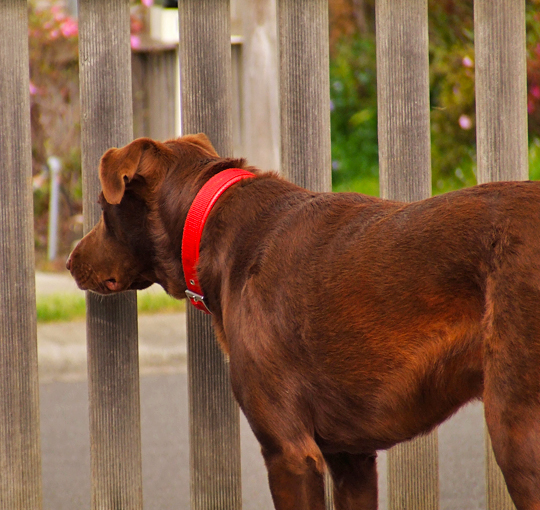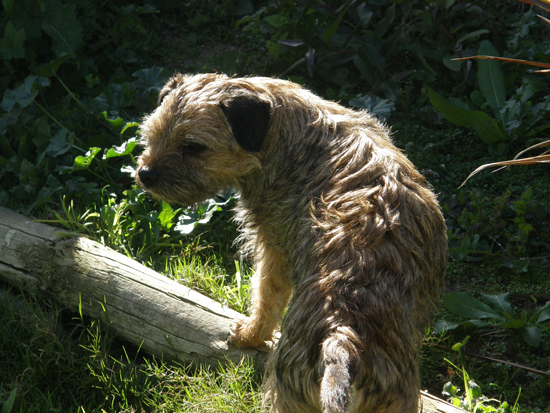This post is part of the series on Belyaev’s fox experiments.
(index | part I | part II | part III | part IV )
There are several theories that have been put forward regarding the origins of the physical characteristics seen in Belyaev’s foxes. I will rebut some theories, and consider the plausibility of others. There are no definite answers, just some realistic theories.
Experimenter bias
One of the most popular anecdotal suggestions is that perhaps the experimenters unconsciously selected for more dog-like physical characteristics. Personally, I think this illustrates a lack-of-faith in the scientific method. The nature of the tests has been clearly outlined, and we must have confidence that this method was adhered to. If there were serious doubts, the method allows for replication. As replication has not occurred (mostly due to expense inhibiting the experiment) we can conclude that the experiment’s results are plausible in its current form. (The empirical world loves nothing more than proving others ‘wrong’ through replication.)
Mutations and Inbreeding
Another loud argument is the notion that the initial stock was carrying mutations or unusual traits, or that these changes were as a result of mutations. Because of the inbreeding of the experiment, these mutations were amplified. This can be rebutted in a number of ways.
Firstly, the foxes were not inbred. This fox population was frequently outcrossed to other commercial fox farm stock, and this has meant that the domesticated fox population has an inbreeding coefficient of 0.02 to 0.07.
Secondly, many of the novel traits outlined in part II are in fact not recessive. This means that the foundation population’s mutations would have been apparent on commencement of the experiment. This was not the case – these traits became apparent over the course of the experiment, and not in the beginning stages.
Another idea is that random mutations are the cause of these traits. However, Belyaev determined that the rate of change in the domesticated strain was “2 or 3 orders higher than the expected frequency of spontaneous mutations”. This means that it probably not mutations that have caused the changes documented.
If we consider the mutation route as plausible, the suggestion with the most worth is Vavilov’s theory of homologous variability. Vavilov’s theory suggested that similar gene sets can give rise to similar mutations, and so we can apply the term ‘similar gene set’ to all foxes, and mutations to their unique traits. This explains how foxes, despite being unrelated, developed similar traits just by the nature of being a fox with a fox gene set.
However, mutations probably did not have a role in the changes seem in the foxes. What is more likely is that behaviour and anatomy may be linked in some way.

Depigmentation is a characteristic in dogs that was also seen in domesticated foxes.Photos © Ruthless Photos
Selecting for many genes
The behaviour of ‘tameness’ is a varied trait, and so is controlled by a number of genes. Because there are a number of genes involved, this means that selecting for tameness, and so also a number of genes, could have a profound affect.
Selecting for important genes
However, what is a more convincing suggestion is that perhaps this rapid change may have been as a result of selection may have been acting on relatively few genes, and genes that have an important regulatory role. This would mean that if a ‘master’ gene was being selected for, this could have far reaching implications. Here we reach the most convincing theory: That selecting for tameness was selecting for a major, complex, hormonal regulatory gene (or genes) which has far ranging implications on the rest of the animal.
The traits in foxes are found in many different domesticated species. Because of these similarities, Belyaev thought that early changes for amenability to domestication must be related to domesticated physiologies. Because behaviour is regulated by neurotransmitters and hormones, modifying these elements through selecting behaviour would also have affects physiological parts of the animal. Even though mammals are varied, their physiological processes are quite similar (their hormones, neurotransmitters, etc) – so this would be the basis for many domesticated mammal species showing similar traits.
Domestication/tamability is behaviour that is rooted in physiological changes and systems (e.g. hormones and neurochemicals). Changing these complex systems would have far-reaching effects on the development of the animals themselves. And as all mammals are controlled by similar bigger-regulatory systems, this is seen as a reasonable explanation for the changes.
Hormone selection
‘Tameness’, ‘nervousness’ and ‘aggression’ is probably controlled by the endocrine system. As described in the last post, serotonin, corticosteroid, cortisol, and adrenocorticotropic hormone were all found to be reduced in domesticated foxes. These hormones are responsible for behaviour that was selected for. However, these hormones have a much bigger role in the endocrine system, so selecting for hormones would have had an extensive role and account for many of the changes observed in the domesticated animals.
Indeed, even the colour changes seen can be accounted for by hormones. Hormones are linked to pigmentogenesis, agouti, and melanin. The endocratic system can also explain the moulting changes in the domesticated foxes.
The endocrine system can explain many of the changes in the domesticated foxes behaviour, but this system also has a big role in development. In selecting for genes that control behaviour, selection was also made for genes that control development.

The presence of juvenille traits (e.g play) in adult dogs was also seen in foxes. Photos © Ruthless Photos
Development mechanisms
The characteristics that the foxes adopted are those that are similar to juveniellism. In this way, the development of the domesticated foxes can be described as ‘retarded’, as even adults have juvenile behaviours. In this way it is thought that genes responsible for development have in some way been selected for.
These developmental changes start from embryos, with the hormones already described affecting the whole development process. Even colouration/pigmentation has been linked to melanocyte and melanoblast activity in embryonic stage. Neucrocrest cell migration would be delayed, which means messages to mature would not get to some body parts. This would also have implications to the socialisation period, and be responsible for the floppy ears. Changes in the maturation timing have been seen.
Behaviour selected for seems to have been controlled by a few genes, but these genes were also responsible for a high level of regulation (i.e. hormonal level, and influencing development) and hence the foxes had a range of phenotype changes that accompanied the selected behaviours.
This is what domestication looks like
The literature review strongly stated that domesticated foxes, and their characteristics, are not terribly surprising. Belyaev says that the “data demonstrate for foxes the kind of variability in similar characters and functions that is often observed in the domestication of other species of animals.” Because all domesticated animals have ‘done the same thing’ (in terms of phenotype traits), then this must be an implication of domestication and not an innate genetic quality of the fox population.
It is from these conclusions that the next post will start to make conclusions that relate to the domestication of dogs. As our dogs display the domestication characteristics of the fox, this experiment is valid to our understanding of the history of dogs.
References: Continue reading →
![]() In 1975, a well preserved “dog-like” skull was found in the Razboinichya Cave (in the Altai Mountains in Siberia). Because this skull was so well preserved, it provided opportunities for study between this animal, dogs, and wolves.
In 1975, a well preserved “dog-like” skull was found in the Razboinichya Cave (in the Altai Mountains in Siberia). Because this skull was so well preserved, it provided opportunities for study between this animal, dogs, and wolves.




